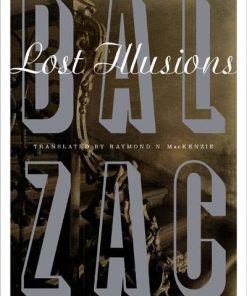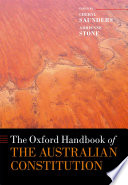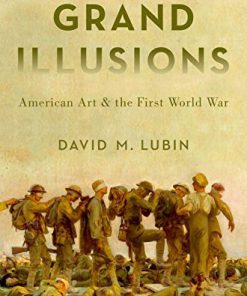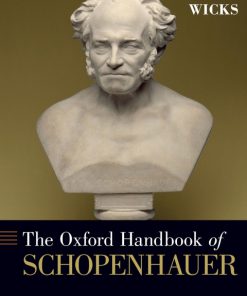The Oxford compendium of visual illusions 1st Edition by Arthur Gilman Shapiro, Dejan Todorović 0190654795 9780190631680
$50.00 Original price was: $50.00.$25.00Current price is: $25.00.
The Oxford compendium of visual illusions 1st Edition by Arthur Gilman Shapiro, Dejan Todorović – Ebook PDF Instant Download/Delivery: 0190654795, 9780190631680
Full download The Oxford compendium of visual illusions 1st Edition after payment
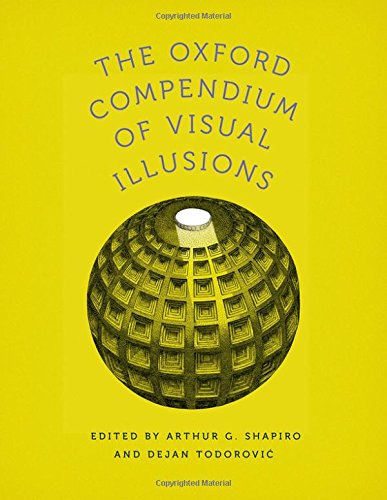
Product details:
ISBN 10: 0190654795
ISBN 13: 9780190631680
Author: Arthur Gilman Shapiro, Dejan Todorović
Visual illusions cut across academic divides and popular interests: on the one hand, illusions provide entertainment as curious tricks of the eye; on the other hand, scientific research related to illusory phenomena has given generations of scientists and artists deep insights into the brain and principles of mind and consciousness. Numerous thinkers (including Aristotle, Descartes, Da Vinci, Escher, Goethe, Galileo, Helmholtz, Maxwell, Newton, and Wittgenstein) have been lured by the apparent simplicity of illusions and the promise that illusory phenomena can elucidate the puzzling relationship between the physical world and our perceptual reality. Over the past thirty years, advances in imaging and electrophysiology has dramatically expanded the range of illusions and enabled new forms of analysis, thereby creating new and exciting ways to consider how the brain constructs our perceptual world. The Oxford Compendium of Visual Illusions is a collection of over one hundred chapters about illusions, displayed and discussed by the researchers who invented and conducted research on the illusions. Chapters include full-color images, associated videos, and extensive references. The book is divided into eleven sections: first, a presentation of general history and viewpoints on illusions, followed by sections on geometric, color, motion, space, faces, and cross-category illusions. The book will be of interest to vision scientists, neuroscientists, psychologists, physicists, philosophers, artists, designers, advertisers, and educators curious about applied aspects of visual perception and the brain.
The Oxford compendium of visual illusions 1st table of contents:
Part I: Introductory General Chapters
1. Early History of Illusions
2. Cross-Cultural Studies of Illusions
3. Visual Illusion in a Comparative Perspective
4. An Analysis of Theoretical Approaches to Geometrical-Optical Illusions
5. Visual Illusions in Action
6. Motion Illusions in Man and Machine
7. The Visual World as Illusion: The Ones We Know and the Ones We Don’t
8. Visual Illusions?
9. Why the Concept of “Visual Illusions” Is Misleading
10. Where Have All the Illusions Gone? A Critique of the Concept of Illusion
Part II: Geometrical
11. Weighted Positional Averaging in the Illusions of the Müller-Lyer Type
12. The Bar-Cross-Ellipse Illusion
13. The Spinning Ellipse Speed Illusion
14. The Ames Window Illusion and Its Variations
15. Three-Dimensional Müller-Lyer Illusion: Theoretical and Practical Implications
16. Why Do Hills Look So Steep?
17. “Shape from Smear”: An Illusion of 3D Shape, Made by Finger-Painting With Noise
18. Geometric-Optical Illusions Under Isoluminance?
19. The Picture Surface Illusion: 3D Biases 2D
20. Cast Shadow Illusions
21. The Leaning Tower Illusion
22. The Invisible Saddle, or the Cap-or-Cup Illusion
23. Symmetry and Uprightness in Visually Perceived Forms
24. The Bathtub Illusion
25. The Pitchroom Illusion: How High Is Up?
26. Geometric Illusions in the Human Face and Body
27. Dynamic Illusory Size Contrast: Enhanced Relative Size Effects Due to Stimulus Motion
28. Size Contrast and Assimilation in the Delboeuf and Ebbinghaus Illusions
29. The Occlusion, Configural Shape, and Shrinkage Illusions
30. Reverse-Perspective Art and Objects—Illusions in Depth and Motion
31. The New Moon Illusion
32. Geometrical Errors Are the Cost of Maintaining the Luminance Contrast Polarity
33. Antigravity Slopes: A New Type of Visual Illusion
34. The Geometrical-Optical Illusions of J. J. Oppel
35. Oppel–Kundt Illusion
36. The Shifted-Chessboard Pattern as Paradigm of the Exegesis of Geometrical-Optical Illusions
Part III: Brightness/Lightness/Color
37. A Layered Experience of Lightness and Color
38. Color and Luminance: Afterimages, Combinations, and Flicker
39. The White Effect
40. The Dungeon Illusion
41. The Contrast Illusion
42. Illusory Color Spread from Apparent Motion
43. The Reversed Contrast Necker Cube
44. Changing the Chevreul Illusion by a Background Luminance Ramp
45. The Curved Grid Non-Illusions: Eliminating Hermann’s Spots and Lingelbach’s Scintillation
46. The Staircase Gelb Illusion
47. The Breathing Light Illusion: Illusory Size and Brightness Variation Induced by Motion
48. Large Shift in Brightness Induced by Motion in Context
49. The Chromatic Mach Card
50. Color Assimilation
51. When Light Looks Like Paint
52. The Scintillating Grid
53. Second-Order Mach Bands, Chevreul, and Craik-O’Brien-Cornsweet Illusions
54. Vasarely’s Nested Squares and the Alternating Brightness Star Illusion
55. Grating Induction
56. Illusory Variations in Apparent Dot Brightness Induced by Density Modulations
57. On the Watercolor Illusion
58. The Chinese Lantern Illusion
59. The Wedding Cake Illusion: Interaction of Geometric and Photometric Factors in Induced Contrast and Assimilation
60. Filling-In Between Contours
61. The Glare Effect
Part IV: Motion Based
62. Improbable Illusory Contours
63. Low-Level Motion Illusions
64. High-Level Organization of Motion: Ambiguous, Primed, Sliding, and Flashed
65. Backscroll Illusion
66. The Rotating Tilted Lines Illusion: Rotation Instead of Expansion—A Peculiar Case of Motion Misperception
67. The Enigmatic Enigma Illusion
68. The Fraser-Wilcox Illusion and Its Extension
69. Induced Motion
70. The Freezing Rotation Illusion
71. Second-Order Reversed Phi
72. Attention-Generated Apparent Motion
73. Two-Stroke Apparent Motion
74. On the Pinna Illusion
75. Color Wagon-Wheel Illusion
76. The Aperture Problem: Illusions Arising During the Integration and Segmentation of Motion Within and Across Apertures
77. Paths of Apparent Human Motion Follow Motor Constraints
78. The Motion Standstill Illusion
79. Objectless Motion: The Pedestalled Motion Paradigm
80. Silencing the Awareness of Change
81. The Kayahara Silhouette Illusion
82. The Motion Aftereffect
83. High Phi and Ghost Phi: Extreme Motion Illusions
84. Stereokinetic Phenomena
85. Motion Illusions in Static Patterns
Part V: Faces
86. The Venus Effect
87. The Hollow-Mask Illusion and Variations
88. The Illusion of Sex
89. The Bogart Effect
90. The Presidential Illusion
91. About Face: The Margaret Thatcher Illusion
92. The Mona Lisa Gaze Effect
93. The Wobbling Face Illusion
94. Adaptation Aftereffects in the Perception of Faces
Part VI: Grouping and Organization
95. Ambiguous Figures Moving Forward
96. The Scramble Illusion: Texture Metamers
97. Amodally Completed Angles
98. Subjective Contours
99. The Ternus Effect
100. Two Sinusoids: 6 – 1 Perceptions
101. The Illusions of Numerosity
102. The Aperture Capture Illusion
Part VII: Attention
103. Motion-Induced Blindness
104. Inattentional Blindness and the Illusion of Attention
Part VIII: Binocular Vision/Stereopsis
105. Binocular Rivalry: The Illusion of Disappearance
106. Stereo Rotation Standstill and Related Illusions
107. The Graph-Paper Effect: A Moving, Illusory, Stereoscopic Texture
Part IX: Adaptation
108. Adaptation to Brightness Change, Contours, Jogging, and Apparent Motion
109. The Color Dove Illusion: Chromatic Filling-In Effect Following a Spatial-Temporal Edge
110. Blur Adaptation and Induction
Part X: Conflicting Scale or Other Information
111. Hybrid Image Illusion
112. Contrast Asynchronies
113. Hidden Images
Part XI: Multisensory
114. The Three-Dimensional Necker Cube
115. The McGurk Effect and the Primacy of Multisensory Perception
People also search for The Oxford compendium of visual illusions 1st:
a compendium of curiosities volume 3
a compendium of curiosities
oxford visual dictionary
oxford illustrated history
illusions of competence
Tags: The Oxford, compendium, visual illusions, Arthur Gilman Shapiro, Dejan Todorović
You may also like…
Politics & Philosophy - Anthropology
Fiction - Classics
Relationships & Lifestyle - Digital Lifestyle
The Palgrave Handbook of Everyday Digital Life 3rd Edition Irving M. Shapiro
Arts - History & Criticism
The Oxford Handbook of the Baroque Oxford Handbooks 1st Edition Lyons 019067847X 9780190678470
Jurisprudence & Law - Constitutional Law
The Oxford Handbook of the Australian Constitution Oxford Handbooks 1st Edition Cheryl Saunders
Politics & Philosophy - Anthropology
Politics & Philosophy - Anthropology
Arthur Schopenhauer The World as Will and Presentation 1st Edition Arthur Schopenhauer
Medicine - Veterinary Medicine
Mechanisms of Mineralization of Vertebrate Skeletal and Dental Tissues 1st Edition Shapiro
Politics & Philosophy - Ancient & Medieval Philosophy
The Oxford Handbook of Schopenhauer (Oxford Handbooks) 1st Edition Robert Wicks





